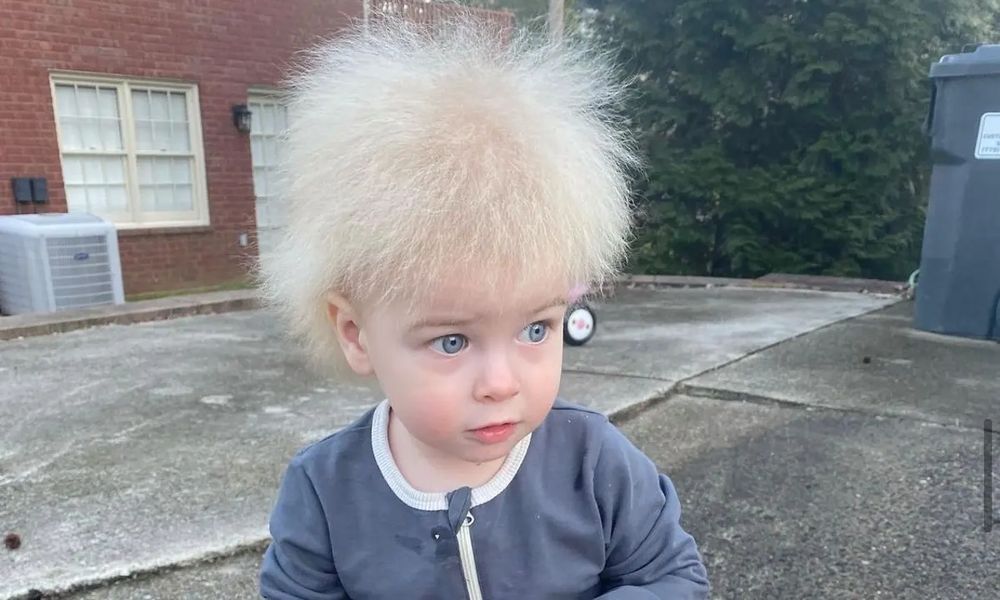In a world of 7.87 billion people, there are only about a 100 cases of Uncombable Hair Syndrome (UHS). It is commonly visible in children of three to 12 years of age, which is why its intriguing effects are usually visible only on adorable babies that take to modeling for social media, making us feel better about our own bad hair days. Their spikes are not because they gave a finger into the cartoonish light socket or because they managed to evade the morning combing. In fact, there’s a lot behind that glistening mane that you might not know about. A rare and vastly unheard of disease, it is UHS that lends a silvery-blonde or straw-coloured hair to these patients, leaving their hair unruly and uncombable.

UHS is a mild disease, and its symptoms suggest nothing different. In most cases the child develops icy looking hair that is brittle to touch. The shiny appearance has caused the disease to be called spun glass syndrome by many. The hair becomes prone to breakage and falling, but the condition begins to improve as the child grows up. Many parents have shared what it’s like to take care of children with UHS—Katelyn Samples, who discovered that her son may be suffering from the syndrome last summer, revealed that his hair tangled easily, which is why she needs to remain careful at all times. On the other hand she revealed, “[...]I very rarely wash his hair. Just doesn’t need to be. It doesn’t really get greasy.” The rare the condition, the stranger its perks, it seems. The condition can however spread to other parts of the area where hair grows. Some patients have also reported ectodermal dysplasias, Bork syndrome and highly sensitive skin.
The common imagery of electrocuted hair is slowly receding, as more and more people are becoming aware of the reality of this hair condition. In children with spun glass syndrome, hair tends to stand up straight due to a genetic mutation inherited in an autosomal dominant manner. This means that the disease is passed in the non-sex gene, and requires only a single copy of the diseased mutation to cause the ailment in the body. To the naked eye, nothing strange is visible beyond the frizzy, flying hair. But a microscopic scan reveals that the shaft of the hair is triangle-shaped instead of the usual cylindrical shape. This causes the hair to grow strangely, bringing with them a host of problems for the parents. In an interview with Today.com, Charlotte Seymour, mother of UHS patient Wynter Seymour had said, “You really can't get a comb through it. For school I just grab it and stick it up in a bobble to keep it out of her way...but doing anything else with it isn't worth it. It's too painful for her.”

The shaft of normal hair (left) and hair in uncombable hair syndrome (right).
While experimentation for treatment continues, there is no proven cure for UHS. On the brighter side, however, some children have witnessed improved hair growth with doses of biotin, while others saw a natural improvement in hair condition with age. Nonetheless, kids with UHS continue to take over Instagram with their bubbling personalities and smiling faces, boasting their own unique look in front of starstruck followers.
References
# The Guardian
# Science Direct
# National Institutes of Health (NIH)
# USA Today
# Today.com












It's a childhood photo of Boris Johnson
ReplyDelete